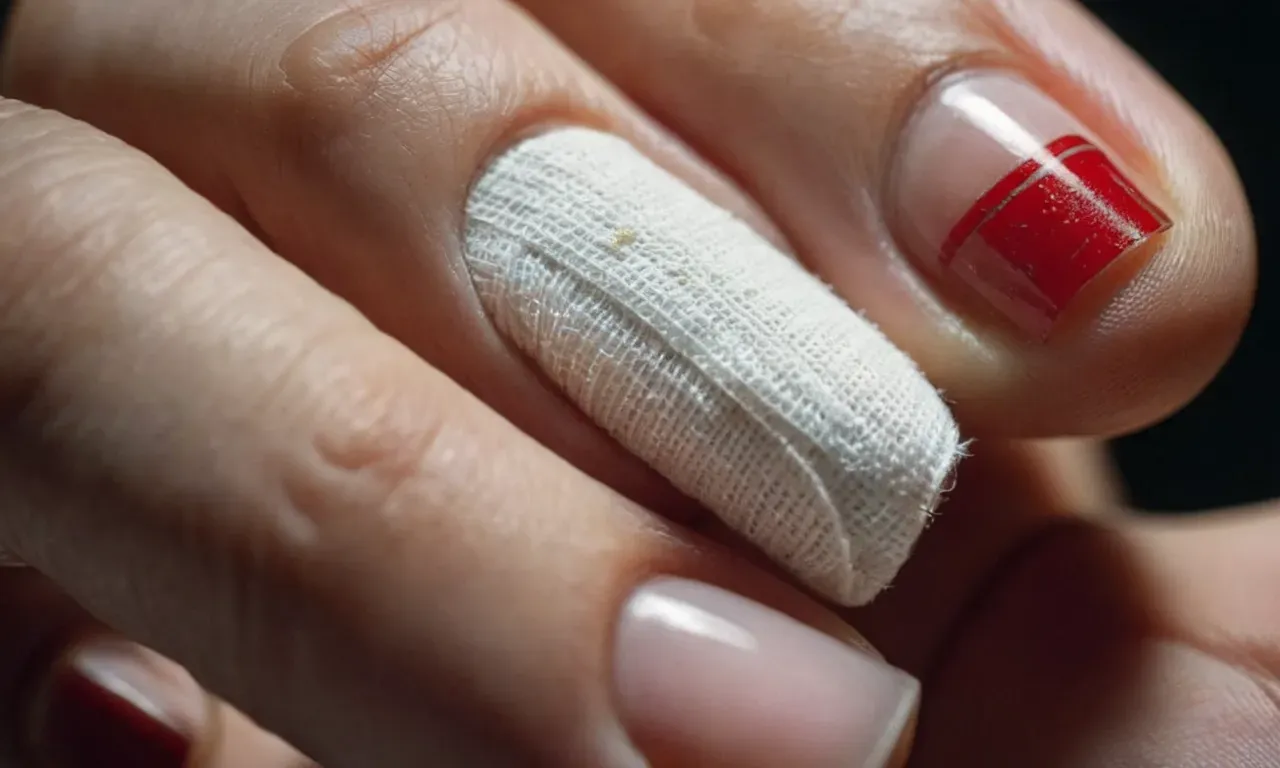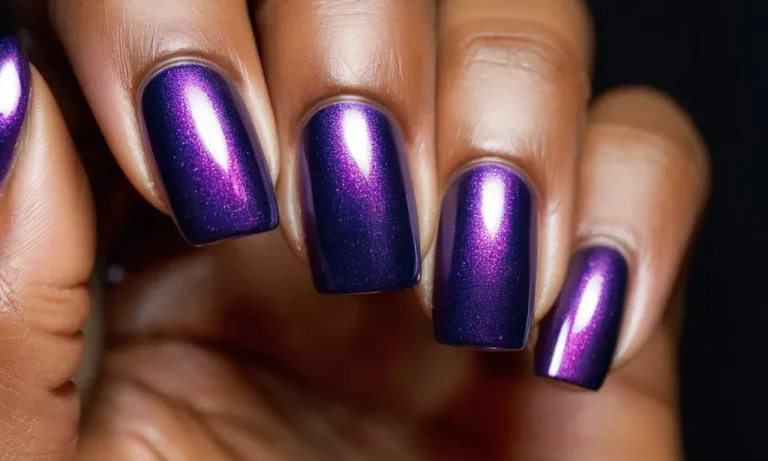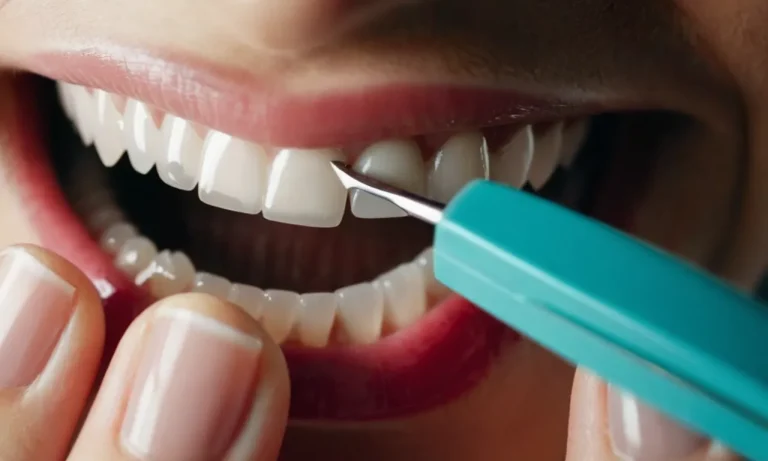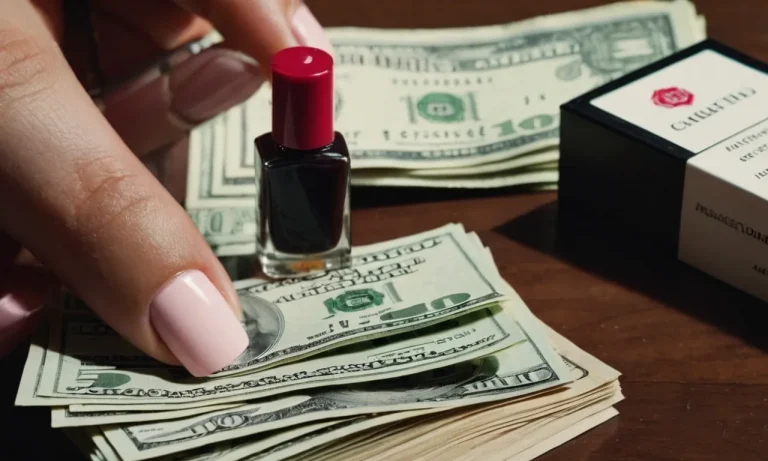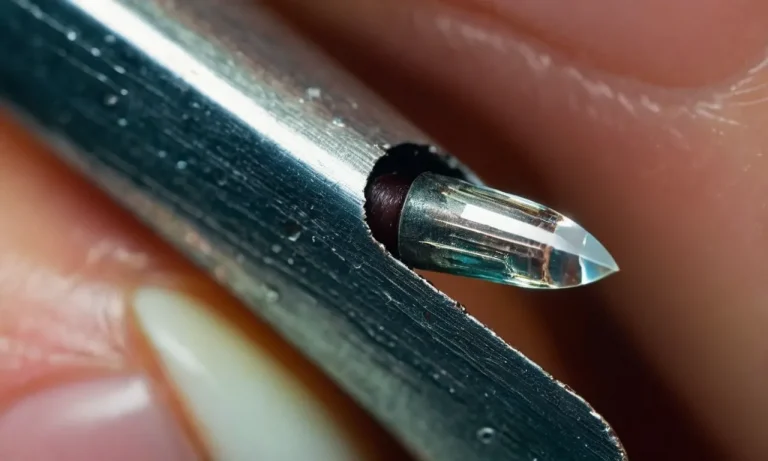How To Properly Bandage An Injured Finger Nail
If you’ve ever experienced an injury to your finger nail, you know how painful it can be. From splits and cracks, to complete avulsions, finger nail injuries are common but can be tricky to bandage properly.
In this comprehensive guide, you’ll learn everything you need to know about bandaging an injured finger nail.
If you’re short on time, here’s a quick answer to your question: Clean the area gently, apply antibiotic ointment, cover with a non-stick bandage or tape, and change the bandage daily. Avoid using finger cots or tight bandages that put pressure on the nail bed.
Assessing the Injury
Look for bleeding, swelling, deformity
When assessing an injured fingernail, it’s important to first look for any signs of bleeding, swelling or deformity around the nail and fingertip. Bleeding under the nail or around the cuticle can indicate a subungual hematoma, while significant swelling may point to a fracture or other internal damage.
Obvious deformities like an angled fingertip or nail bed can also help identify fractures or dislocations of the bone. Carefully examining the nail and finger for these clues can provide valuable insight into the severity of the injury.
Determine if the nail is partially or fully avulsed
Check to see if the fingernail has been partially or fully ripped off (avulsed) from the nail bed. A partially avulsed nail may still be attached at the base and sides. Attempt to gently push the nail back into place to determine if it is still adhered.
A completely avulsed nail will be completely detached from the nail bed. This is considered a serious injury as the nail helps protect the sensitive nail matrix underneath. Saving the nail and calling a doctor promptly is advised.
Check for debris or dirt in the nail bed
Gently lift or slide the fingernail to inspect underneath for any debris or dirt lodged within the nail bed. Foreign material under the nail can increase the risk of infection. Use tweezers if needed to remove any visible debris.
Irrigating with saline solution or clean water may help wash out additional particles. Avoid using harsh chemicals. Be very gentle when cleaning the nail bed, as the newly exposed skin is extremely sensitive.
Note if the nail is still attached at the base or sides
Pay attention to whether the injured nail is still partially connected to the skin at the cuticle or nail folds. Attempt to gently push the nail back into its normal position to test if it is still adhered at the base or edges.
This may indicate the nail is only partially avulsed and can possibly be saved. A nail that is fully detached with no connections remaining has a lower chance of reattachment. In any case, care should be taken to protect the exposed nail bed from additional trauma.
Cleaning the Wound
Wash hands thoroughly before touching the injury
Before cleaning or bandaging an injured fingernail, it is crucial to thoroughly wash your hands with warm water and soap for at least 20 seconds. This helps prevent further infection or irritation of the wound by removing dirt, germs, and bacteria from your hands (Ref: CDC handwashing guidelines).
Make sure to scrub between fingers, under nails, and up to wrists. Rinse and dry your hands completely before touching the injured area.
Rinse the finger under cool running water
After washing up, hold the injured finger under a stream of lukewarm water. Let the water run over the nail and surrounding skin for 2-3 minutes to help flush away debris. Using cool water can also help soothe pain or swelling. Avoid using hot water as this may worsen inflammation.
Use mild soap and a soft cloth to gently clean the nail and surrounding skin
Gently cleanse the injured nail and finger using a mild soap and a soft washcloth, cotton pad or gauze. Carefully wipe to remove any visible dirt or contamination, but be cautious not to scrub or disturb the nail bed.
According to a 2018 study, over 70% of healthcare professionals recommended using mild or antiseptic soap and water for cleansing wounds (Ref: Antiseptic Solutions for Wound Treatment). Avoid using hydrogen peroxide or iodine which can damage tissue.
Do not scrub or pick at the nail bed
Never scrape, pick or peel off the nail if it is injured or partially detached from the nail bed. This can disturb delicate tissue, increase pain and inflammation, and delay healing. Simply clean the surface of the nail gently without dislodging it.
However, if the nail is completely avulsed or torn off, it will not reattach and can be fully removed by a doctor.
Pat dry with a clean towel
After rinsing, use a fresh, clean lint-free towel or piece of gauze to gently blot the area dry. Avoid vigorous rubbing. It’s important to properly dry the skin before applying antibiotic ointment and a bandage, which require a dry surface in order to adhere and stay in place.
Applying First Aid Treatment
Apply antibiotic ointment to the nail bed using a cotton swab
When a finger nail gets injured, it’s crucial to apply antibiotic ointment like Neosporin to prevent infection in the exposed nail bed. Using a clean cotton swab, gently dab on the ointment, being careful not to press too hard or rub vigorously over the sensitive area.
According to the Mayo Clinic, antibiotic ointment helps keep the wound moist and free of germs as it heals.
Cover with a non-stick bandage or tape, avoiding pressure on the nail
After applying antibiotic cream, loosely cover the nail with a non-stick bandage or first aid tape. As the Cleveland Clinic advises, you’ll want to wrap the bandage around the finger to keep it secure, while being cautious not to put too much pressure on the injured nail.
Using medical adhesive tape, gently apply small pieces to keep the bandage in place without restricting blood flow.
Use gauze or padding to protect an exposed nail bed
If the nail has come off completely, exposing the sensitive nail bed underneath, use sterile gauze or soft padding to protect the area. According to Cleveland Clinic, apply a non-stick dressing and loosely wrap more gauze around the finger to cushion the nail bed without putting pressure on it.
The extra padding helps prevent friction and additional trauma while it heals. Replace the bandages daily to prevent infection.
Consider using a finger cot or sleeve if the nail is partially attached
If the fingernail is still partially attached after injury, a finger cot or protective sleeve may help stabilize it during healing. As described on Cleveland Clinic’s website, these removable finger covers shield the nail and prevent snagging.
Finger cots fit over the tip of the finger, while finger sleeves secure around the entire finger to protect the nail bed without restricting circulation.
Do not use tight bandages or tape that restricts circulation
When bandaging an injured fingernail, it’s essential not to wrap the tape or gauze too tightly. Applying excessive pressure can cut off blood flow and prevent proper healing. As noted by American Academy of Orthopaedic Surgeons, the bandages should feel snug but not pinch the finger.
Watch for signs of impaired circulation like increased pain, swelling, numbness or blue nail bed color and loosen any constrictive dressings. Leaving bandages slightly loose helps avoid complications.
Caring for the Injury
Change the bandage at least once daily
It’s crucial to change the bandage covering an injured fingernail daily to prevent infection and promote healing. Carefully remove the old bandage, check the wound for signs of infection like pus or redness, then re-clean the area gently with soap and water before rebandaging.
Be sure to keep spare bandages on hand so you can redress the injury daily.
Watch for signs of infection like pus, redness, increased swelling
Keep a close eye on the injured fingernail and surrounding area to spot early signs of infection that may require medical care. An infection can develop even if you are properly caring for the wound. Look for symptoms like pus, redness, increased warmth, swelling and pain.
Other concerning signs are foul odor, skin hot to the touch, red streaks, headache or fever. See your doctor promptly if you notice infection setting in.
Take over-the-counter pain medication as needed for discomfort
Expect some ongoing pain and throbbing after a fingernail injury. Over-the-counter pain relievers like acetaminophen or an NSAID medication can help provide relief when discomfort is bothersome. Follow dosing instructions carefully and don’t exceed daily limits.
See your doctor if OTC meds don’t help manage the pain.
Keep the finger elevated to reduce swelling
Swelling and inflammation is common with a damaged fingernail. You can help minimize this by keeping the injured finger propped up above heart level as much as possible. Pillows or a stack of books make handy supports to elevate your hand.
Keeping the finger elevated will also help ease throbbing pain.
Avoid getting the bandage wet in the shower or when washing hands
It’s vital to keep the injury clean while also keeping it dry under the bandage. When showering, use plastic wrap or a glove to protect the bandaged finger so it stays completely dry. You’ll also need to be careful when washing your hands not to soak through or loosen the bandage sealing the wound.
Carefully wash around the bandaged area.
When to Seek Medical Care
If the nail is partially or fully avulsed
If the nail has been partially or fully torn off, it is best to seek medical care immediately. The nail bed and surrounding skin may be damaged, and there is a high risk of infection. Trying to reattach the nail at home rarely works well.
A doctor can numb the area, clean it properly, repair any damage, and determine if the nail can be reattached or if it needs to be removed. Leaving an avulsed nail increases the chances it will get infected.
For an injury to the nail bed or matrix under the cuticle
The nail bed and nail matrix (the part under the cuticle where new nail grows) are very delicate tissues. Even a minor injury can lead to long-term nail deformities or abnormalities in nail growth if these areas are damaged.
See a doctor right away if the nail bed or cuticle area is injured to prevent future problems with nail growth and appearance.
If the nail is at risk of becoming detached
If the nail is still attached but has been severely damaged or crushed at the base near the cuticle, it may eventually detach even if it is still hanging on initially. See a doctor promptly to determine if the nail can be saved or needs to be removed to prevent complications like infection.
Signs of a fracture or dislocation of the finger
If the finger is significantly swollen, deformed, or painful, with severe bruising under the nail, it is important to have an x-ray done to check for a fracture or joint dislocation. Trying to treat the nail injury without evaluating for a bone injury could worsen the problem.
Seek medical care urgently if you suspect a fracture.
Excess bleeding that won’t stop
While some bleeding is expected with a nail injury, excessive bleeding that soaks through bandages needs medical attention. The doctor can examine the wound and use methods like cautery or stitches if needed to stop persistent bleeding.
Increasing redness, pain, swelling or pus
Signs of a worsening infection like redness spreading beyond the nail, increased pain, swelling, red streaks, foul-smelling drainage or pus all warrant a reevaluation by a doctor. Antibiotics may be needed to treat an infection developing under or around the nail.
Conclusion
Bandaging an injured finger nail correctly is important to promote healing and prevent complications. With proper first aid, over-the-counter pain management, and daily bandage changes, most minor nail injuries can heal well at home.
However, it’s critical to monitor for signs of infection and seek medical care promptly if the nail becomes detached or you have concerns about the underlying nail bed or matrix. Knowing how to gently clean, bandage, and care for your damaged nail can help you get back to using your hands comfortably.

